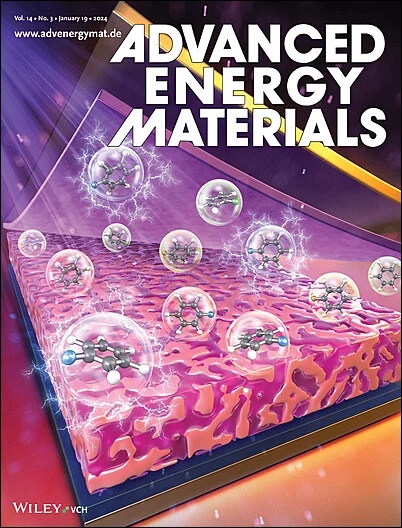The Origin of Improved Performance in Boron‐Alloyed Silicon Nanoparticle‐Based Anodes for Lithium‐Ion Batteries
IF 26
1区 材料科学
Q1 CHEMISTRY, PHYSICAL
引用次数: 0
Abstract
Stabilizing the solid electrolyte interphase (SEI) remains a key challenge for silicon‐based lithium‐ion battery anodes. Alloying silicon with secondary elements like boron has emerged as a promising strategy to improve the cycle life of silicon anodes, yet the underlying mechanism remains unclear. To address this knowledge gap, how boron concentration influences battery performance is systematically investigated. These results show a near‐monotonic increase in cycle lifetime with higher boron content, with boron‐rich electrodes significantly outperforming pure silicon. Additionally, silicon‐boron alloy anodes exhibit nearly three times longer calendar life than pure silicon. Through detailed mechanistic analysis, alternative contributing factors are systematically ruled out, and it is proposed that improved passivation arises from a strong permanent dipole at the nanoparticle surface. This dipole, formed by undercoordinated and highly Lewis acidic boron, creates a static, ion‐dense layer that stabilizes the electrochemical interface, reducing parasitic electrolyte decomposition and enhancing long‐term stability. These findings suggest that, within the SEI framework, the electric double layer is an important consideration in surface passivation. This insight provides an underexplored parameter space for optimizing silicon anodes in next‐generation lithium‐ion batteries.锂离子电池用硼合金硅纳米颗粒基阳极性能改善的来源
稳定固体电解质间相(SEI)仍然是硅基锂离子电池阳极的关键挑战。将硅与硼等次生元素合金化已成为提高硅阳极循环寿命的一种有前景的策略,但其潜在机制尚不清楚。为了解决这一知识差距,硼浓度如何影响电池性能进行了系统的研究。这些结果表明,随着硼含量的增加,循环寿命几乎单调地增加,富硼电极的性能明显优于纯硅电极。此外,硅硼合金阳极的日历寿命几乎是纯硅的三倍。通过详细的机理分析,系统地排除了其他影响因素,并提出改善钝化是由纳米颗粒表面的强永久偶极子引起的。这种偶极子由低配位和高刘易斯酸性硼形成,形成了一个静态的、离子密集的层,稳定了电化学界面,减少了寄生电解质的分解,提高了长期稳定性。这些发现表明,在SEI框架内,双电层是表面钝化的重要考虑因素。这一见解为优化下一代锂离子电池中的硅阳极提供了一个尚未充分开发的参数空间。
本文章由计算机程序翻译,如有差异,请以英文原文为准。
求助全文
约1分钟内获得全文
求助全文
来源期刊

Advanced Energy Materials
CHEMISTRY, PHYSICAL-ENERGY & FUELS
CiteScore
41.90
自引率
4.00%
发文量
889
审稿时长
1.4 months
期刊介绍:
Established in 2011, Advanced Energy Materials is an international, interdisciplinary, English-language journal that focuses on materials used in energy harvesting, conversion, and storage. It is regarded as a top-quality journal alongside Advanced Materials, Advanced Functional Materials, and Small.
With a 2022 Impact Factor of 27.8, Advanced Energy Materials is considered a prime source for the best energy-related research. The journal covers a wide range of topics in energy-related research, including organic and inorganic photovoltaics, batteries and supercapacitors, fuel cells, hydrogen generation and storage, thermoelectrics, water splitting and photocatalysis, solar fuels and thermosolar power, magnetocalorics, and piezoelectronics.
The readership of Advanced Energy Materials includes materials scientists, chemists, physicists, and engineers in both academia and industry. The journal is indexed in various databases and collections, such as Advanced Technologies & Aerospace Database, FIZ Karlsruhe, INSPEC (IET), Science Citation Index Expanded, Technology Collection, and Web of Science, among others.
 求助内容:
求助内容: 应助结果提醒方式:
应助结果提醒方式:


